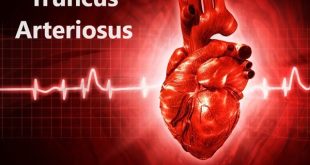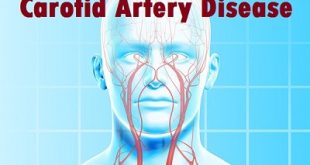Definition
Atrial septal defect (ASD) is a congenital heart disease in which there is an opening in the wall (the atrial septum) between the heart’s two upper chambers (the right and left atria). An ASD is one of the defects referred to as “a hole in the heart.”
Normally, the heart has two sides, which are separated by a muscular wall called the septum. Each side of the heart also has two parts the upper chamber, called an atrium, and the lower chamber, called a ventricle. The right side of the heart carries deoxygenated blood back into the heart and the left side carries oxygenated blood back out to the body.
An ASD allows the oxygenated blood to pass from the left atrium, through the opening in the septum, and into the right atrium, causing the two to mix. This leads to increased blood flow through the right side of the heart and lungs. Over time, this “extra” blood volume stresses the heart and causes the right atrium, ventricle and pulmonary arteries to dilate (become wider). This can eventually lead to heart failure, pulmonary hypertension or heart rhythm abnormalities.
Prevalence
ASDs are common and can present at any age. Females constitute 65% to 75% of patients with secundum ASDs, but the gender distribution is equal for sinus venosus and ostium primum ASDs.
Atrial septal defect pathophysiology
In most cases of atrial septal defect, blood shunts from the left atrium to the right atrium, causing a volume overload of the right-sided chambers. The magnitude of shunting depends on the size of the defect, the ratio of pulmonary to systemic vascular resistance, and the relative compliance of the two ventricles. Excessive blood flow through the right-side chambers results in their dilation and hypertrophy. Pulmonary vasoconstriction and development of pulmonary hypertension may occur as a consequence of excessive pulmonary blood flow and may precipitate right-side CHF. In conditions associated with high right atrial pressure (eg, pulmonic stenosis), shunting may occur from right-to-left across a patent foramen ovale or atrial septal defect, potentially resulting in cyanosis and polycythemia.
Types of Atrial septal defect
Atrial septal defects fall into three categories. Within each type of defect, the severity may vary. It may be small or large and may require surgery or close without surgical intervention. Only a cardiologist or cardiothoracic surgeon can determine the severity of the heart problem.
Secundum ASD (ASD 2 or ASD II): The most common type of ASD, where the defect is located in the middle of the atrial septum.
Primum ASD (ASD 1 or ASD I): The second most common type of ASD, where the defect is located in the endocardial cushion area of the septum. This type of ASD is often accompanied by other problems, including an endocardial cushion ventricular septal defect, which means that the defect includes the lower portion of the heart as well as the upper portion.
Sinus Venosus ASD (Sinus Venus): This type of ASD occurs in the upper portion of the septum, in close proximity to where the vena cava brings blood to the heart from the body.
Risk factors
Atrial septal defect (ASD) occurs as the baby’s heart is developing during pregnancy. Certain health conditions or drug use during pregnancy may increase a baby’s risk of atrial septal defect or other congenital heart defect. These things include:
- German measles (rubella) infection during the first few months of pregnancy
- Diabetes
- Lupus
- Alcohol or tobacco use
- Illegal drug use, such as cocaine
- Use of certain medications, including some anti-seizure medications and drugs to treat mood disorders
Some types of congenital heart defects occur in families (inherited). If you have or someone in your family has congenital heart disease, including ASD, screening by a genetic counselor can help determine the risk of certain heart defects in future children.
Causes
Congenital heart defects can run in families. Talk to your doctor about genetic testing if you or a family member has an atrial septal defect.
Some conditions that occur during pregnancy can increase the risk of a baby having ASD, including:
- Diabetes
- Drug, tobacco, or alcohol use
- Lupus
- Obesity
- Rubella, also known as German measles
- Phenylketonuria (PKU)
Symptoms
You may not have symptoms if your ASD is very small. If you do have symptoms, they may not appear until you are age 20 or older. You may have any of the following:
- Not having any energy, or feeling very tired (fatigue)
- Feeling your heart skip a beat or flutter
- Shortness of breath that is worse during exercise
- Lips and fingernails turn blue with activity
- Colds or lung infections that happen often
- Chest pain
Atrial septal defect complications
Over time, if an ASD isn’t repaired, the extra blood flow to the right side of the heart and lungs may cause heart problems. Usually, most of these problems don’t show up until adulthood, often around age 30 or later. Complications are rare in infants and children.
Possible complications include:
Right heart failure: An ASD causes the right side of the heart to work harder because it has to pump extra blood to the lungs. Over time, the heart may become tired from this extra work and not pump well.
Arrhythmias: Extra blood flowing into the right atrium through an ASD can cause the atrium to stretch and enlarge. Over time, this can lead to arrhythmias (irregular heartbeats). Arrhythmia symptoms may include palpitations or a rapid heartbeat.
Stroke: Usually, the lungs filter out small blood clots that can form on the right side of the heart. Sometimes a blood clot can pass from the right atrium to the left atrium through an ASD and be pumped out to the body. This type of clot can travel to an artery in the brain, block blood flow, and cause a stroke.
Pulmonary hypertension (PH): PH is increased pressure in the pulmonary arteries. These arteries carry blood from your heart to your lungs to pick up oxygen. Over time, PH can damage the arteries and small blood vessels in the lungs. They become thick and stiff, making it harder for blood to flow through them.
These problems develop over many years and don’t occur in children. They also are rare in adults because most ASDs either close on their own or are repaired in early childhood.
Diagnosis and test
Your child’s doctor may have heard a heart murmur when listening to your child’s heart with a stethoscope. The heart murmur is from the abnormal flow of blood through the heart.
Your child may need to see a pediatric cardiologist for a diagnosis. This is a doctor with special training to treat heart problems in children. The doctor will examine your child and listen to your child’s heart and lungs. The doctor will find out where the murmur is best heard and how loud it is. Your child may have some tests, such as:
Chest X-ray: This test may show an enlarged heart or it may show changes in your child’s lungs because of the blood flow changes caused by an atrial septal defect.
Electrocardiogram (ECG): This test records the electrical activity of the heart. It shows abnormal rhythms (arrhythmias) that may be caused by an atrial septal defect. It can also find heart muscle stress caused by an atrial septal defect.
Echocardiogram: This test uses sound waves to make a moving picture of the heart and heart valves. An echo can show the blood flow through the atrial septal opening and find out how big the opening is.
Cardiac catheterization: This tests uses a thin, flexible tube called a catheter put near the heart. Contrast dye is used during a cardiac catheterization to get even clearer pictures. In some children, this procedure may be used to close the atrial septal defect.
Treatment and medications
About half of ASDs close without treatment. One in five ASDs will close naturally during the first year of life. Your child’s doctor may suggest careful monitoring to see if the opening closes on its own before recommending further treatment.
While some ASDs close over time, others require treatment. Options include:
Careful monitoring: Depending on the diagnosis, doctors may monitor children who have ASD without symptoms of heart failure. This could require regular check ups and tests to see if the defect gets smaller or closes on its own.
Cardiac catheterization: Often done under general anesthesia, an interventional cardiac catheterization uses a small, flexible tube threaded through a blood vessel. Through this tube, a small device can plug the hole in the atrial septum. Once secured in place, normal tissue grows around the device and no further procedures are required. Patients usually spend one night in the hospital after having ASD closure during a cardiac catheterization.
Device closure: Doctors use a small, flexible tube called a catheter along with another tool called a septal occluder. The doctor will carefully push the catheter through your child’s blood vessels all the way into her heart. Then, your doctor will use the septal occluder to stop blood from flowing through the ASD hole.
Surgery: In some cases, open-heart surgery is needed to repair the ASD. While your child is asleep for the repair, a heart-lung bypass machine maintains the body’s flow of blood and oxygen. Your child may spend two to four days in the hospital afterward. Outcomes from surgery are typically very good, although there are risks from possible complications and limits on activity during recovery.
Medicine: Many children with ASD don’t have symptoms and don’t need medication. But it still might be a good idea for some children to take it. Medicine can help some children’s hearts work better. For example, water pills (diuretics) help a child’s heart work better by flushing extra fluid out of a child’s body through their kidneys.
Prevention of Atrial septal defect
In most cases, ASD cannot be prevented. If a woman is planning to conceive, she needs to schedule a pre-conception visit with their doctor. This visit should include:
Getting tested for immunity to Rubella: If a woman is not immune, consult the doctor about getting vaccinated.
Going over one’s current health conditions and medications: An individual needs to carefully monitor certain health problems during pregnancy. The doctor may also recommend adjusting or stopping certain medications before one gets pregnant.
Reviewing family medical history: If one has a family history of heart defects or other genetic disorders, she must consider talking with a genetic counsellor to determine what the risk might be before getting pregnant.
 Diseases Treatments Dictionary This is complete solution to read all diseases treatments Which covers Prevention, Causes, Symptoms, Medical Terms, Drugs, Prescription, Natural Remedies with cures and Treatments. Most of the common diseases were listed in names, split with categories.
Diseases Treatments Dictionary This is complete solution to read all diseases treatments Which covers Prevention, Causes, Symptoms, Medical Terms, Drugs, Prescription, Natural Remedies with cures and Treatments. Most of the common diseases were listed in names, split with categories.







